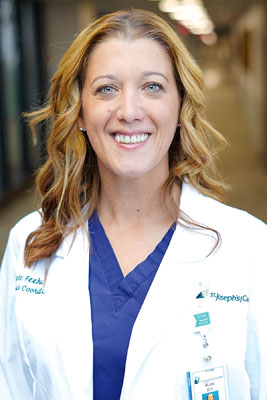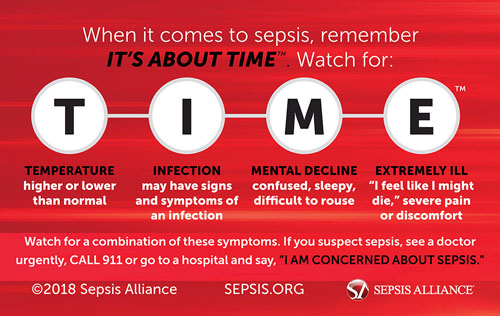Recognizing Sepsis Early Saves Lives
Kate Feehan, RN
Sepsis Coordinator, St. Joseph’s/Candler
Smart Living: An infection can happen to anyone, but sometimes that infection can lead to sepsis. What is sepsis and how does it develop?
 Kate Feehan: Sepsis is life-threatening condition in which your body is responding abnormally to an infection you have. The immune system’s response is so overwhelming, in fact, that it can potentially lead to tissue damage or organ
failure, and if not treated it can be fatal.
Kate Feehan: Sepsis is life-threatening condition in which your body is responding abnormally to an infection you have. The immune system’s response is so overwhelming, in fact, that it can potentially lead to tissue damage or organ
failure, and if not treated it can be fatal.
Because any type of infection can happen to anyone at any time, this is also true of sepsis. But some populations are more at risk. The elderly, premature infants, people who are immunosuppressed because of cancer treatment and patient with chronic conditions such as kidney disease or diabetes are more susceptible. Common infections leading to sepsis include kidney infections such as a UTI, skin infections from burns, and lung infections from pneumonia.
Invasive surgery or severe wounds also put patients at a higher risk. This may be why some people view sepsis as a hospital-acquired disease. While post-op infections can happen, the fact is that more than 80 percent of septic cases start in the community, such as the home or a nursing home.
SL: What do nurses do to prevent sepsis or keep it from getting worse? Can people use that knowledge to protect themselves as well?
KF: Our nurses are trained to notice signs of systemic inflammatory response syndrome, or SIRS, and those criteria along with a suspected or confirmed case of infection lets the nurse know what to do next. Symptoms include a body temperature that is either too high or too low, an elevated heart rate, high respiratory rate, low blood pressure, or an altered mental status, meaning the patient is confused or sleepy. We have also worked with local EMS and first responders to recognize these signs in order to begin early treatment. Once the potential for sepsis is recognized, patients are given what we call a sepsis bundle of antibiotics and fluids to stop the progression.
An educated community can definitely help prevent sepsis. The best way is to prevent infection in the first place—this means practicing good hygiene. You should always clean cuts, treat burns, and properly care for any medical devices such as catheters. You should also talk to your doctor about necessary vaccinations for the flu or pneumonia. And we cannot stress enough the importance of washing your hands!
If you suspect sepsis, you should see your doctor or go to the emergency room. Sepsis is both preventable and treatable with early recognition.
